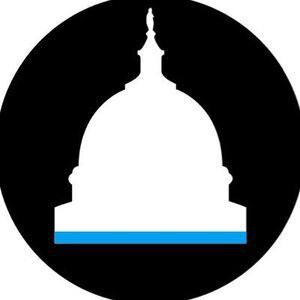President Donald Trump’s pick for treasury secretary, Scott Bessent, cleared his first confirmation hurdle from the Senate Finance Committee on Tuesday, Jan 21. On the same day, the agency he hopes to lead started taking “extraordinary measures” to keep from breaching the debt ceiling.
According to the Treasury Department, the national debt stands at a record $36.2 trillion as of Tuesday morning, more than the $36.1 trillion allotted. To keep from accumulating more debt, the agency in charge of paying the government’s bills must partake in some creative accounting.
How long the department can use extraordinary measures to avoid defaulting on U.S. debt “is subject to considerable uncertainty,” outgoing Treasury Secretary Janet Yellen warned last week.
“The debt limit does not authorize new spending, but it creates a risk that the federal government might not be able to finance its existing legal obligations that Congresses and presidents of both parties have made in the past,” Yellen wrote in a letter to House Speaker Mike Johnson, R-La., on her last full day in office. “I respectfully urge Congress to act promptly to protect the full faith and credit of the United States.”
Taking ‘extraordinary measures‘
In the meantime, Yellen told Johnson the agency would put off investing in retirement funds for federal and U.S. Postal Service employees. This isn’t a permanent saving, however. Those funds will need to be recouped once the debt ceiling is raised. The Treasury Department said federal retirees and employees will be unaffected by the suspension, which goes through March 14.
Tax revenues could further stay a debt ceiling showdown, but the threat of one casts a shadow over Capitol Hill on Trump’s first week back in the Oval Office.
Raising the debt ceiling does not give the government a blank check to spend. It only allows the Treasury Department to fulfill spending and debt obligations already authorized by Congress. Congress most recently suspended the debt ceiling in June 2023 when it was at $31.4 trillion. The suspension lifted on Jan. 1, 2025, at the new debt limit of $36.1 trillion.
Since 1960, Congress has acted 78 times to adjust the debt ceiling, Treasury data shows. Although the U.S. has never defaulted on its debt, the last-minute deals to raise or suspend the ceiling have hurt U.S. standing. In 2023, both Fitch Ratings and Moody’s downgraded the U.S. credit rating.
“The repeated debt-limit political standoffs and last-minute resolutions have eroded confidence in fiscal management,” Fitch Ratings said when announcing the downgrade.
Do away with the debt limit?
Since winning the election, Trump proposed getting rid of the debt ceiling. During a phone interview with NBC News in December, he said it would be “the smartest thing [Congress] could do. I would support that entirely.”
“It doesn’t mean anything, except psychologically,” Trump added.
“I agree with President-elect Trump that the debt limit should be repealed,” Sen. Elizabeth Warren, D-Mass., said during Bessent’s confirmation hearing last week.
“If he wants to eliminate the debt limit, I will work with him and you on that,” Bessent told Warren.
Bessent assured the Senate Finance Committee the U.S. would not default on its debt if he is confirmed as treasury secretary. He likened the debt limit to a handbrake in a car. If you remove the handbrake, you can still slam on the brake pedal, but it’s one less tool to stop the car.
Down the debt road
The nonpartisan Congressional Budget Office warned last week the U.S. is heading for debt loads not seen since right after World War II. CBO projections said that from 2025 to 2035, debt payments will further outpace revenue growth.
When looking at debt as a percent of economic growth, the CBO said federal debt will rise from 100% of gross domestic product (GDP) this year to 118% in 2035. That exceeds the previous record of 106% set in 1946.
By 2035, the CBO estimates national debt will reach $52 trillion.










